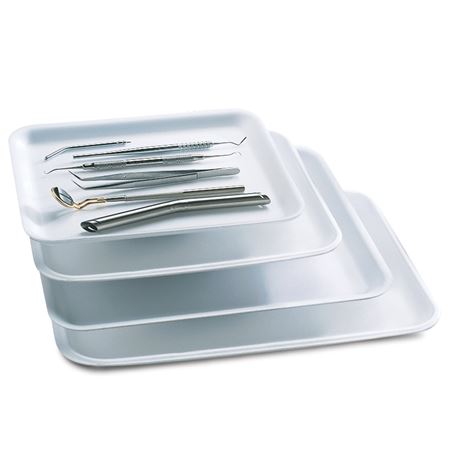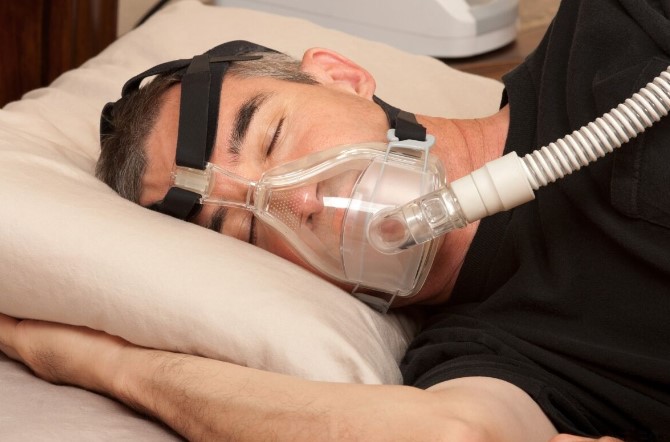Important Role of Instrument Trays in Patient Care

INTRODUCTION
Every healthcare facility involves the usage of instrument trays. They are used in hospitals, laboratories, clinics, and emergency facilities. To increase efficiency and promote patient care, it is important to understand the essence of instrument trays in patient care. Instrument Trays are containers that hold the medical instruments. They are used for holding, carrying, and storing clinical instruments.
They protect medical equipments in several ways. They help instruments from getting damaged. The trays are useful for transporting clinical tools from one location to another. They are also used for storing surgical instruments, keeping them sorted when not in use. They are usually metallic trays with corners coved and large bead edges helping in easy cleaning, stacking and handling. They can be made of various materials like stainless steel, enamel and aluminum.
They are available with or without covers, in different types of styles and sizes and can accommodate numerous medical instruments. The trays are mainly used in healthcare facilities during surgical procedures as well as for sterilization, autoclaving, and storage. Each tray contains the instruments needed to perform a medical procedure or family of procedures.
When the tray configuration is properly designed, it is designed in such a way so that it can offer a minimum set of required instruments to perform the highest number of clinical procedures. They are used in Operating Rooms (OR).The importance of trays can be justified by the convenience and safety. Also, the elimination of unnecessary instruments in trays can promote time savings, less operational effort, and smaller cost in ORs, without negatively impacting the patients.
DIFFERENT TYPES OF CLINICAL INSTRUMENT TRAYS
A basic instrument tray can be of stainless steel type. But, the standard version is a solid stainless steel tray that is available in various sizes and with configurations like flat and domed. However, there are many specialist trays to fulfill specific types of medical demands. They include:
- a) Perforated trays: It includes perforations to enable better instrument sterilizing and drying. b) Mesh trays: Wire mesh enables thorough sterilization of medical items and equipment by allowing unimpeded air flow. c) Drying trays: It enables healthcare professionals to select the necessary medical instrument at a glance. d) Catheterization trays: They hold a set of instruments needed to collect sterile urine samples in the hospital. e) ENT trays: It can hold a set of tools needed for completing sterile ENT procedures or surgeries. f) Eye trays: It can hold a set of medical supplies needed for eye procedures or surgeries.
The various types of trays are made so that they could be versatile in terms of the ways they are used. Like stainless steel trays, they can be autoclaved or used as storage units. They are available in different sizes. Seamless designing on various products helps in easy cleaning and flat lids enable trays to be durable.
BENEFITS OF USING INSTRUMENT TRAYS
There are various benefits of instrument trays. First of all, modern trays are made from materials, such as enhanced steel alloys and composites. These boost the strength, stiffness, and durability of the trays while simultaneously reducing their weight. New types of plastics and polymers with tremendous shape retention properties can withstand enormous heat and radiation, allowing for increased sterilization as well.
Secondly, new designs allow for advanced capabilities, enhanced versatility and improved safety and reliability. The cost of procurement and administration is reduced, since one tray contains all the necessary equipment, the time and money of contacting many suppliers. It improves efficiency, which implies that more procedures can be done in a short span since the time for preparation is considerable. The waiting time for patients can be reduced, and their procedures can be carried out as early as possible.
IMPACT OF STERILIZATION ON INSTRUMENT TRAYS
Healthcare settings are highly vulnerable to fungi, viruses and deadly bacteria that can cause fatal complications. Using non-sterilized instrument trays drastically increases the likelihood of transmitting a disease from one patient to another. Sterilizing each piece of tray is critical to keeping each patient as safe and healthy as possible. Sterilization kills, deactivates, or eliminates all forms of life and other biological agents which are present on instrument trays. Means of sterilization can be heat, chemicals, irradiation, high pressure and filtration as well.
The other methods that can be used to sterilize the trays include the steam heat, ethylene oxide gas or chemicals. Using an autoclave to sterilize instrument trays is the most prominent method. It involves placing the tray to be sterilized, inside the autoclave chamber. After that, the autoclave subjects its content to pressurized saturated steam that reaches a temperature of 121 °C (250 °F). Essentially, the sterilization process uses temperatures that are higher than the boiling point of water. This procedure can take between 20–90 minutes, depending on the size of the autoclave chamber.
CLASSIFICATIONS OF INSTRUMENT TRAY STERILIZATION
The classifications of instrument tray sterilization include:
- a) Disinfection: most pathogens on trays are eliminated; microbial contamination is reduced on the surface. Freshly produced 10{b574a629d83ad7698d9c0ca2d3a10ad895e8e51aa97c347fc42e9508f0e4325d} bleach and 70{b574a629d83ad7698d9c0ca2d3a10ad895e8e51aa97c347fc42e9508f0e4325d} ethanol are two highly used clinical disinfectants. b) Radiation sterilization: It involves exposing the trays to radiation for sterilization. The main difference between different radiation types is their penetration and hence their effectiveness. UV rays have low penetration and thus are less effective, but it is relatively safe and can be used for small trays sterilization. X-rays and Gamma rays have far more penetrating power and thus are more effective for large tray sterilization.
- c) Chemical method of sterilization: Heating provides a reliable way to get rid of all microbes, but it is not always appropriate as it can damage the tray to be sterilized. In that case, chemical methods for sterilization is used, this involves the use of harmful liquids and toxic gases without affecting the trays. Sterilization is effective using gases because they penetrate quickly onto the tray like steam. d) Heat Method: The heat is used to kill the microbes on the tray surface. The extent of sterilization is affected by the temperature of the heat and duration of heating.
On the basis of type of heat used, heat methods are classified into-
(i) Wet Heat Sterilization: In most hospitals, this is a mostly used method which is done in autoclaves. It uses steam heated to 121–134 °C under pressure. This is a very effective method that kills all microbes, bacterial spores and viruses on instrument trays. It kills microbes by hydrolysis and coagulation of cellular proteins, which is efficiently achieved by intense heat in the presence of water. The intense heat comes from the steam.
(ii) Dry heat sterilization: Here trays are exposed to high temperatures either by flaming or a hot air oven. Flaming is used for metallic trays. The metallic end of the tray is heated to red hot on the flame.
CONCLUSION
Proper usage of instrument trays can be challenging. Concerned users should ensure that trays are used in a manner that will facilitate the sterilization process, protect the trays from potential damage and facilitate their safe, proper use. It will help them to use safe, functional and sterile instrument trays. The future research in case of instrument trays may be targeted at two promising directions: traceability of instrument trays and cross-sectional analysis of instrument tray content which will be beneficial to the patient care in the long run.







